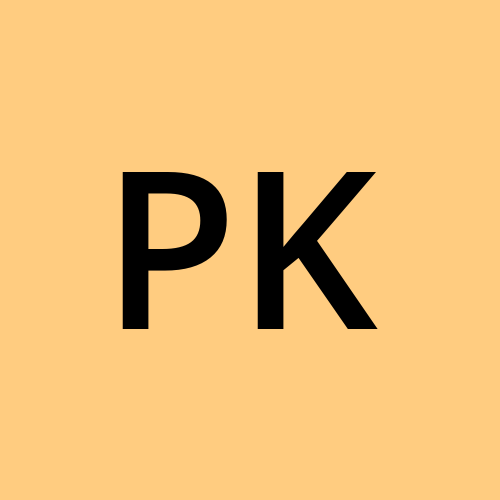From Sketch to Screen: The Journey of Architectural Ideas through CAD Design and Drafting
 pavantheaecassociates
pavantheaecassociatesThe journey from a simple architectural sketch to a fully detailed digital design is a remarkable transformation. What starts as a rough concept on paper evolves into a precise and buildable plan through the power of Computer-Aided Design (CAD). This evolution not only refines the original idea but also introduces a level of detail and accuracy essential for successful architectural projects. In this blog, we’ll delve into the stages of this journey, explore the tools and software involved, and provide valuable tips for taking your designs from sketch to screen.
The Evolution of Design
Initial Sketches: The Foundation of Creativity
Every architectural project begins with a rough sketch. This initial phase is crucial as it captures the core concept of the design. These sketches are typically done by hand, visually representing the designer’s vision. They serve as a preliminary outline and help brainstorm and explore various design possibilities.
From Paper to Digital: The Role of CAD Software
The next step in the journey is converting these sketches into a digital format using CAD software. This transition significantly shifts from a conceptual idea to a more precise and detailed design. CAD Design Services such as AutoCAD and Revit are instrumental in this phase, allowing designers to translate their rough sketches into accurate digital models.
Essential CAD Tools and Their Functions
AutoCAD: Widely used for creating detailed 2D drafts and technical drawings. AutoCAD provides various tools for line drawing, dimensioning, and annotation, essential for developing comprehensive plans and layouts. This tool is a cornerstone of Architectural CAD Drafting.
Revit: This tool excels in 3D and Building Information Modeling (BIM). Revit helps create detailed 3D models that include the geometry, building material properties, and structural details. It’s beneficial for visualizing how different building elements interact and making design decisions. Revit is a critical component in Architectural Drafting.
Enhancing the Original Idea: Precision and Detail
One of the main advantages of CAD software is its ability to enhance the original sketch with precision and detail. Unlike hand-drawn sketches, CAD tools allow exact measurements, precise angles, and detailed components. This enhancement is crucial for creating buildable plans that meet construction requirements and adhere to regulatory standards.
Benefits of CAD in Design Development
Accuracy: CAD software ensures that all dimensions and details are accurate, reducing the likelihood of errors during construction.
Visualization: The ability to create 3D models helps visualize the final product, allowing designers and clients to see a realistic representation of the building before it’s constructed.
Efficiency: CAD tools streamline the design process, making modifying and updating designs easier. This efficiency is essential for meeting project deadlines and adapting to changes. Services such as CAD Drafting Services are crucial in ensuring these efficiencies.
Tips for Designers: From Sketch to Digital Excellence
Converting sketches to digital designs can be a challenging process, but following these tips can help ensure a smooth transition:
- Start with Clear Sketches
The quality of your final digital model depends significantly on the clarity of your initial sketches. Make sure your drawings are as detailed and transparent as possible. Include dimensions, annotations, and relevant notes to guide the digital conversion process.
2. Master Your CAD Tools
Understanding the full range of features offered by CAD software is essential for creating detailed and accurate designs. Take the time to learn the tools and functionalities of software like AutoCAD and Revit. Online tutorials, courses, and practice can help in mastering these tools.
3. Iterate and Refine
Design is an iterative process. Use CAD software to refine your design continuously. Make adjustments based on feedback, explore different design options, and ensure all elements are well-coordinated. Iteration helps in improving the accuracy and overall quality of the design.
4. Utilize Software Features Effectively
Both AutoCAD and Revit offer advanced features that can enhance your design. For example, AutoCAD’s layering system allows for the organization of different design elements, while Revit’s BIM capabilities help integrate various building systems and components. Use these features to improve the functionality and detail of your designs.
Visuals and Animations: Making the Design Process Engaging
Incorporating visuals and animations into your design process can make it more engaging and informative. Before-and-after comparisons of sketches and CAD models can provide a clear understanding of how the design evolves. Animations can illustrate how different elements interact and highlight key features of the design.
Creating Effective Visuals
Before-and-After Comparisons: Show the transformation from sketch to CAD model to highlight the level of detail and precision achieved.
3D Renderings: Use 3D renderings to provide a realistic view of the final design. This helps clients and stakeholders visualize the end product more effectively.
Interactive Animations: Create animations that demonstrate the functionality and flow of the design. Interactive features can enhance understanding and engagement.
Conclusion
The journey from a rough sketch to a polished CAD drawing is a testament to the power of technology in architectural design. CAD Design Services transform initial concepts into precise, detailed models, enabling designers to create accurate and buildable plans. By mastering CAD tools and following best practices, designers can enhance their workflows and produce high-quality designs. Embrace the digital transformation and explore the full potential of CAD to bring your architectural ideas to life.
Subscribe to my newsletter
Read articles from pavantheaecassociates directly inside your inbox. Subscribe to the newsletter, and don't miss out.
Written by

pavantheaecassociates
pavantheaecassociates
The AEC Associates is a Leading Design Support Service provider to the Global Architectural, Engineering, and Construction Industry. We offer Architectural & Engineering CAD Design, Drafting Services, and Building Information Modeling (BIM) infused services. Our customized services help our clients lower their total cost, help them manage their design documentation & production, and also help them utilize their resources effectively.